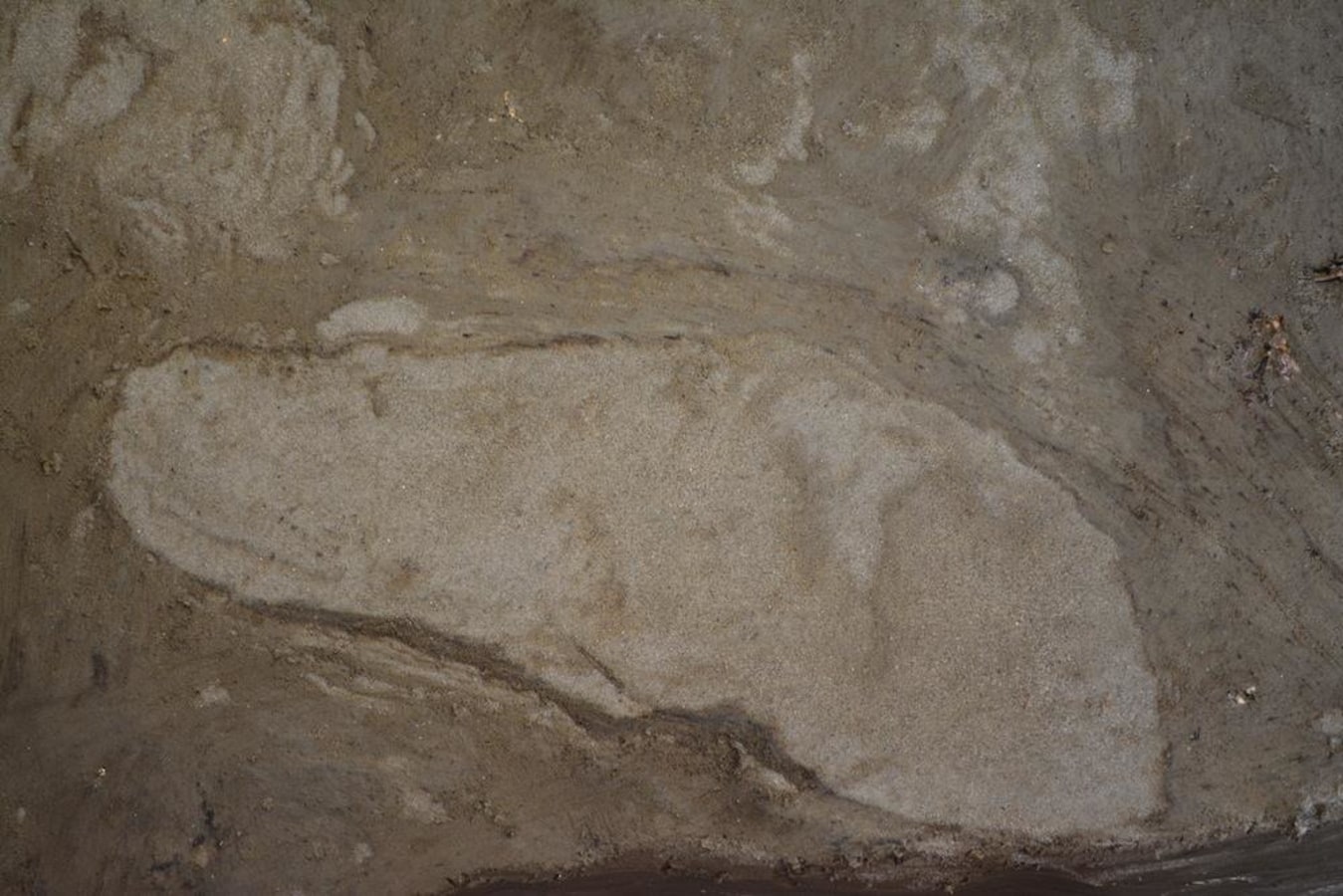Unusual find of 5,000-year-old human footprints by the Fehmarn excavations provides an insight into the population’s everyday life and challenges
 This is a photo of one of the Stone Age footprints before its last cleaning, or “de-dusting,” according to Lars Ewald Jensen, a project manager with the Museum Lolland-Falster, which is leading the excavations of Lolland’s terrain.
This is a photo of one of the Stone Age footprints before its last cleaning, or “de-dusting,” according to Lars Ewald Jensen, a project manager with the Museum Lolland-Falster, which is leading the excavations of Lolland’s terrain.
DENMARK—(ENEWSPF)—13 November 2014. At the archaeological excavations for the future Fehmarn Belt Fixed link, archaeologists from Museum Lolland-Falster have found something as unusual as footprints from Stone Age people. The footprints have been found around a several metres long system of fixed gillnets on stakes, which would have stood off the beach in the coastal landscape of prehistoric time.
“This is really quite extraordinary, finding footprints from humans. Normally, what we find is their rubbish in the form of tools and pottery, but here, we suddenly have a completely different type of traces from the past, footprints left by a human being. We are familiar with animal footprints, but to the best of my knowledge, we have never come across human footprints in Danish Stone Age archaeology before,” says a happy Terje Stafseth, Archaeologist at Museum Lolland-Falster.
The first steps in the history of mankind were taken on the African continent about five million years ago, where a two-legged humanoid creature separated himself from the anthropoid apes. Over millions of years, evolution has created modern man, but our ability to leave two footprints, rather than four, was the decisive prerequisite for the creation of human civilisation.
Up until the end of the 1800s, when land reclamation was carried out on Lolland, the area where the permanent Fehmarn Belt link is to be established contained fjords and streams, stretching into the coastal landscape. For thousands of years, the area has been under the constant influence of the sea, which has required a great adaptive capacity on the part of the local population. Finds of fixed gillnets on stakes are clear evidence that the coast formed the setting for many activities. However, they are also evidence of the conditions that Stone Age people lived under, with the destructive forces of the sea very near. Surveys have shown that continual repairs have been carried out on the wattle of the fixed gillnets, following damage caused partly by flooding from the sea.
Finds of footprints right by the fixed gillnets show that the population attempted to save parts of the fixed gillnets before the entire capture system was flooded and there by covered in sand. The footprints show that at least two people – judging from the foot sizes – have stepped out into the swampy seabed to save whatever they could, and that subsequently, they set up the fixed gillnet on stakes some distance away. The sand from the flooding followed down into their footprints in the underground, leaving clear imprints for future archaeologists, both on the surface and at the depth where they sank in.
“The investigations have shown that the Stone Age population repeatedly repaired, and actually moved parts of the capture system in order to ensure that it always worked and that it was placed optimally in relation to the coast and currents. We are able to follow the footprints and sense the importance of the capture system, which would have been important for the coastal population to retain a livelihood and therefore worth maintaining,” Terje Stafseth continues.
With finds of footprints from the Stone Age population, the excavations in Rødbyhavn have suddenly become personified. Here we have direct imprints from ancient people’s activities, which can be associated with a concrete event – a storm destroyed a fixed gillnet on stakes, and in order to secure the survival of the population, this has had to be repaired.
The excavations in the area have not yet been completed, so Museum Lolland-Falster hopes that further investigations of the footprints will reveal even more than they already have.
See photos of the Stone Age human footprints
Source: http://www.aabne-samlinger.dk








